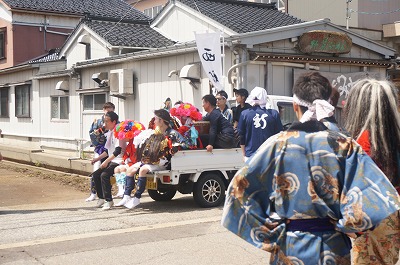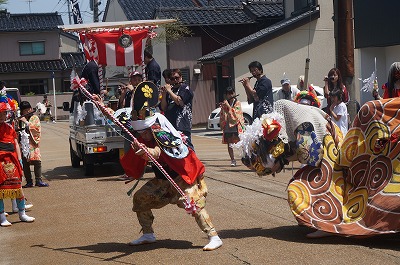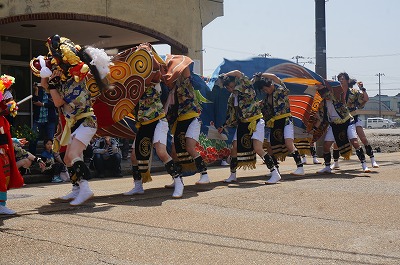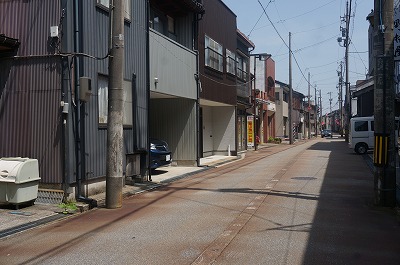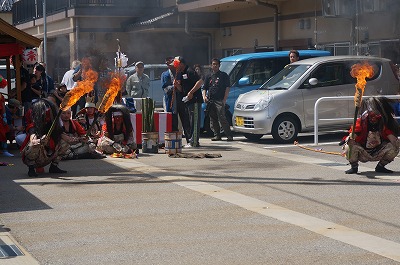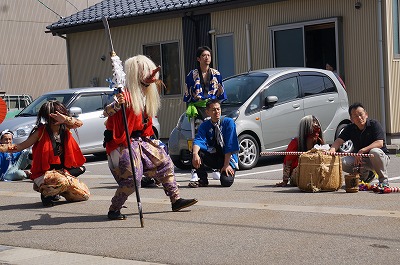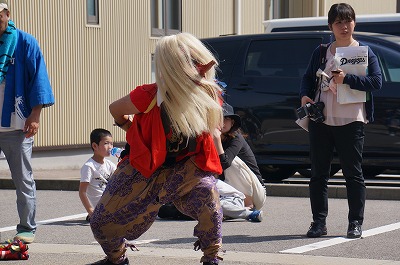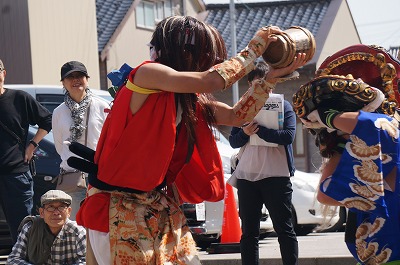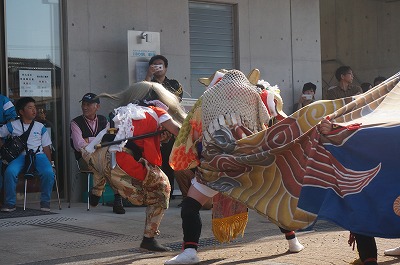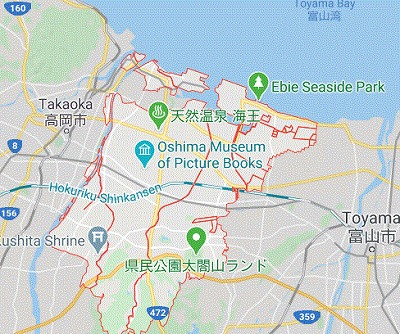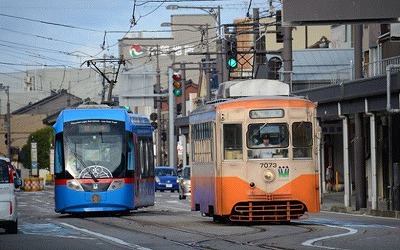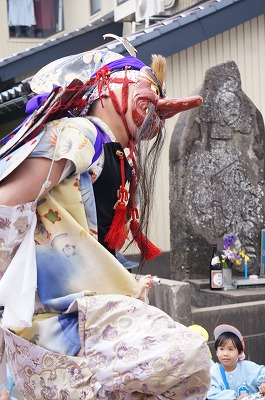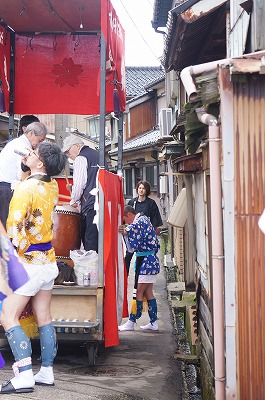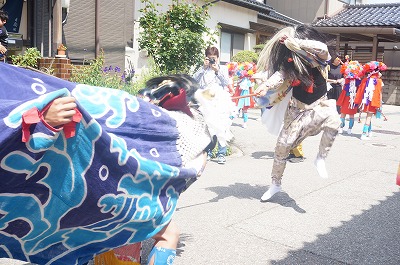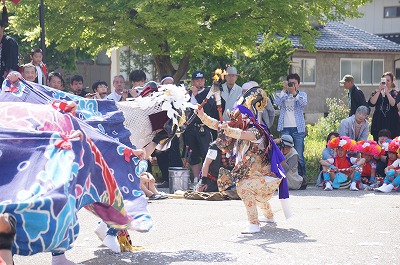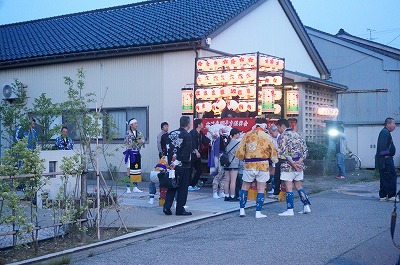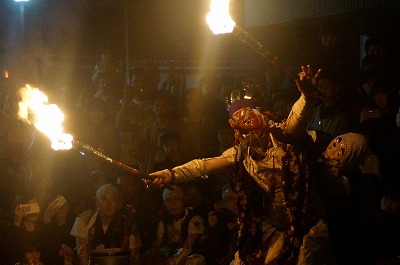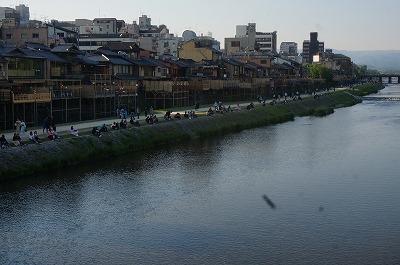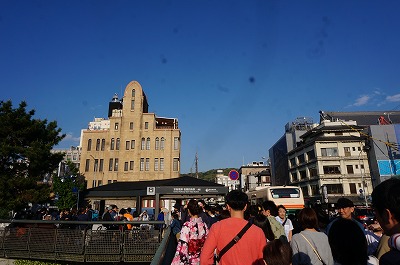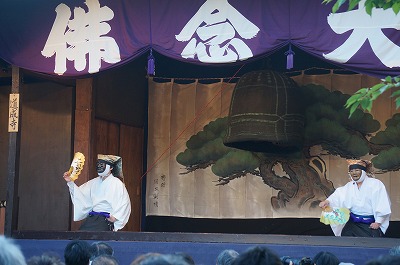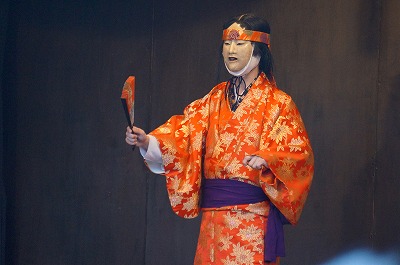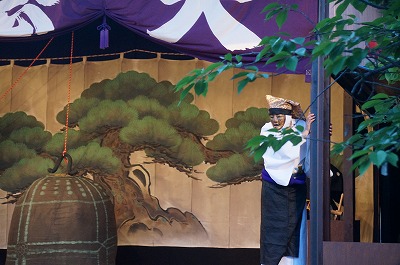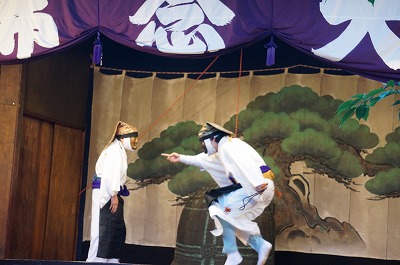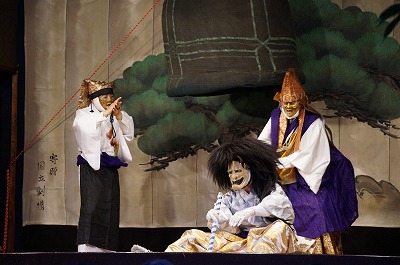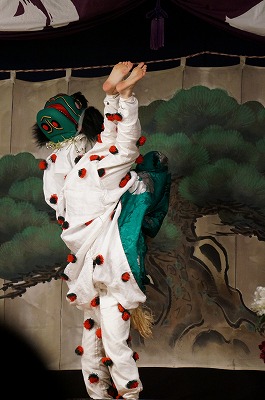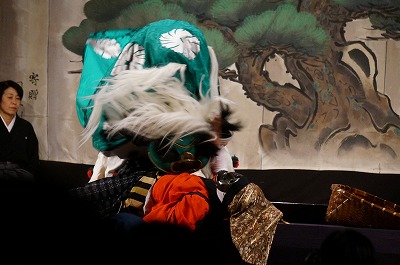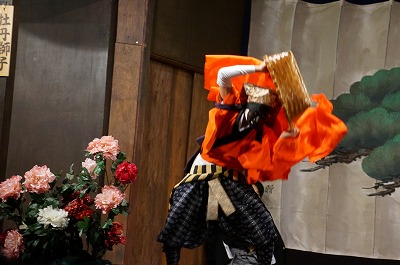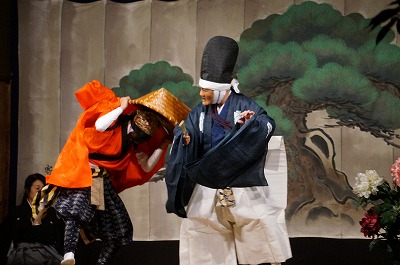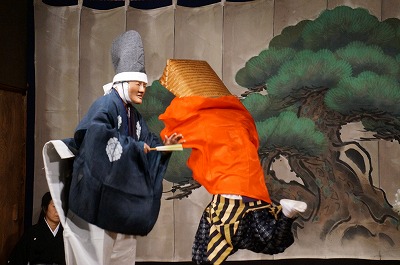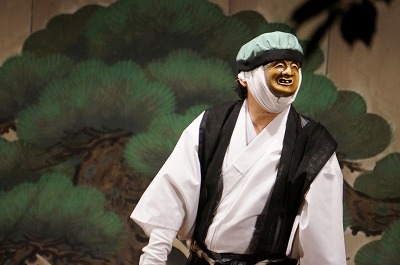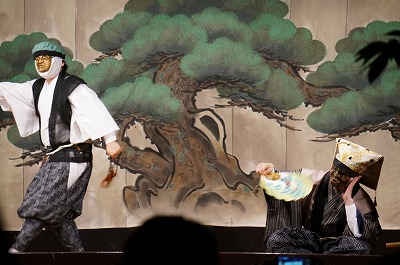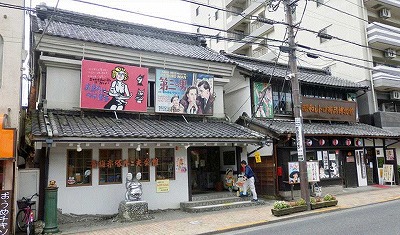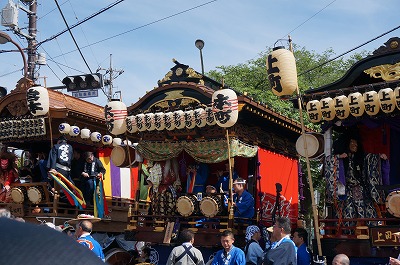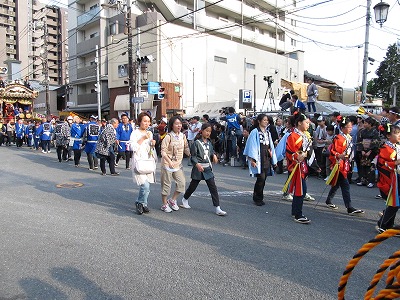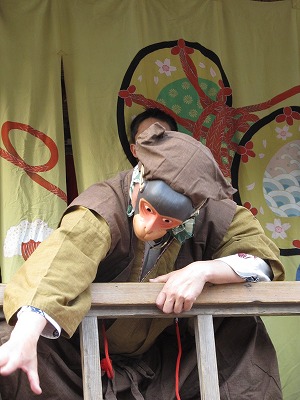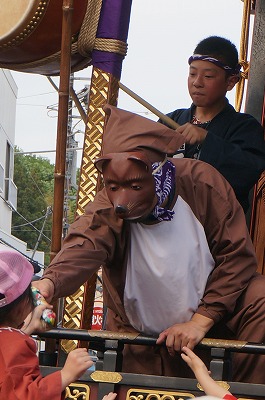Report: Manbu oneri~The Luxurious World of Buddha at Dai nenbutu ji-temple
Date: 1~5th, May, every year
Location: Uemachi 1-7-26, Hirano district, Osaka city, Osaka prefecture
Access: Take the Midosuji subway line from Shin-Osaka or the JR Loop Line from Osaka to Tennoji. From there, take the subway Tanimachi Line or the JR Yamato Line to Hirano. It takes about 5 to 8 minutes to walk from each station.
Introduction~ In Japan, if ogres dance, so will Buddha
In Japan, when ogres dance, Buddhas also dance. Although fewer in number than the ogres, there are also events in which Buddha appears.
The most representative of these is the “25 Bodhisattva Parade”. From the middle of the Heian period (794-1185), the belief in the Pure Land began to flourish. It was believed that the period of 10,000 years after the death of the Buddha was the “the Latter Days of the Law” and that the Buddha’s way of life would be disturbed. As a result, people began to yearn for the afterlife. The Pure Land teachings taught that if people recited the Nembutsu diligently, they could go to paradise. This is the Pure Land faith. And just before death, the “25 bodhisattvas” come to greet us with the Buddha. The “25 Bodhisattvas Parade” is an attempt to recreate that scene.
Interesting Japanese paintings reappear
By the way, this site has previously introduced a strange painting called “Choju Giga” (Caricatures of Birds and Animals), and And there are many other wondrous paintings that seem to be the genealogical descendants of this. Now, in such a world of wonder, we may be able to see something like the following scenes. So, let’s go and see the world of Buddha with the characters in those scenes (the sparrows in the wondrous paintings).

Sparrow Kotota: Mr. Owl, I heard that ”Manbu Oneri” is held in Osaka, so I’m thinking of going there for a while.”
Mr.Owl: That’s a good point. Faith will save you.

Sparrow Kotota: Oh, that must be Dai Nenbutsuji-temple.
Source: “Suzume-no Kotota (sparrow Kotota’s story) 雀の小藤太” (16C) cf: https://www.suntory.co.jp/sma/collection/data/detail?id=635


Dai-nenbutsuji-temple 大念仏寺
The end of April and the first half of May in Japan is known as “Golden Week” because of the concentration of holidays, and people move around a lot. Seasonally, it is the transition from spring to summer, with good weather and the mildest climate. After this time, the rainy season arrives a month later. After mid-July, the summer season begins. Therefore, there are many events and activities. But it’s not all good. Unfortunately, the cost of transportation and accommodation goes up.
The procession of the Dainenbutsuji Temple will be held during this period. The temple was founded about 900 years ago, but it is said that the hall was built in its current location about 400 years ago. However, the procession itself is said to have been held about 700 years ago.




Because of its long history, the precincts are large. A vermilion-lacquered corridor circled around the main hall. This is where the Bodhisattvas go around. Inside, food stalls lined the streets, adding color to the festivities.
It’s been less than an hour. I think I came a little too early. Oh, there are people gathering around the main hall. Let’s take a look there.
The sky is clear in May. It’s a bit windys, though.
How crowded is this event?


Excuse me, I’d like to stay here for a moment.


Please, come in. Sit down. It’s free.
There are quite a few people here.
The festival lasts for five days, so it won’t be too crowded. Take your time for a while.
Oneri (Procession)~The Buddhas Walking
It’s almost one o’clock. Oh, the music is starting to play.
It’s the gagaku. It is one of the oldest musical forms left in Japan.



You don’t have to lean over so much, it’s still okay. At first it’s just the monks and parishioners walking by.
It takes about five minutes per lap.
It’s 2:00. It’s about to start. Here comes the first Bodhisattva


Fast. Much faster than before. It is so fast that I don’t have time to listen to the explanation, isn’t it?


There are twenty-five bodhisattvas, so I guess they would have to do this in order to make it in time.
But this parade is the main event.
That’s it. There are such circumstances in the world of grown-ups, aren’t there? It’s complicated, right?








In this way, I guess the faces of the Bodhisattvas are all the same, just with different possessions.
There doesn’t seem to be a broad scope of imagination when it comes to thinking about Buddhas and angels and other sacred things, does there?

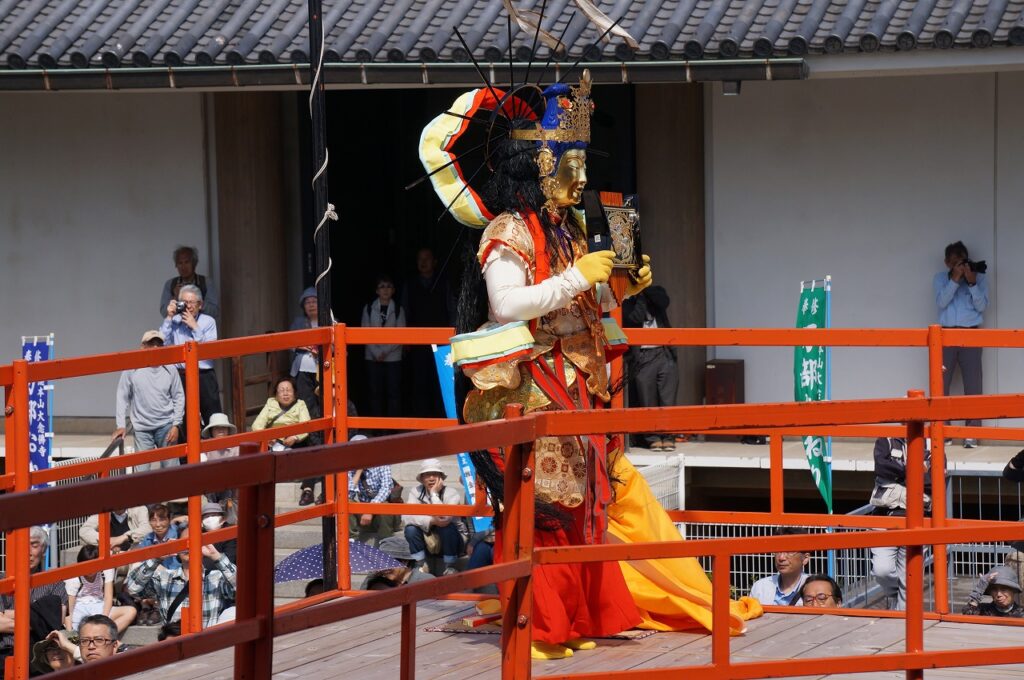





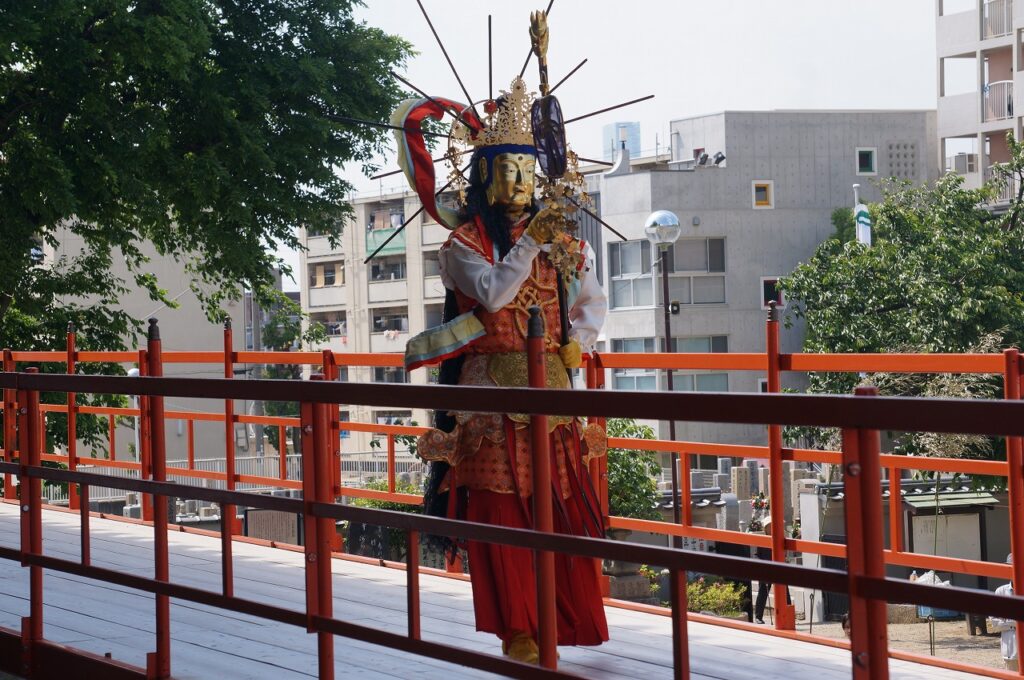





Finally, the monks came out again.
That’s the end of the Bodhisattva procession, that was about half an hour.
Everyone is getting ready to leave.
If you have time, you can take a peek inside the main hall a little more. You can see the paradise.
Is that all right? I wouldn’t mind to peek in.
I doubt we’ll be able to get inside, but you can at least peek through the door. It’s a wide entrance.
Thank you very much.
Paradise inside the main hall
Kotota went to the door of the main hall as the former guest had told him earlier, and a number of people were peeking in. Inside, devotees are sitting and watching the ceremony. In the space where very beautiful and graceful music is echoing, he can see all the Bodhisattvas from earlier.
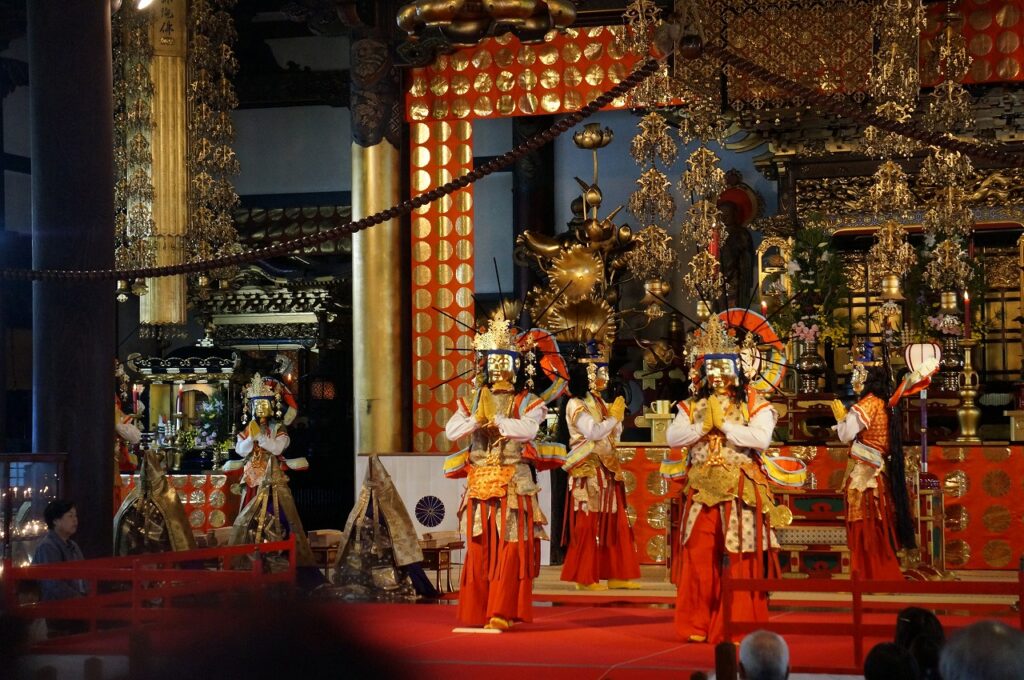
Here emerged a scene of the Buddhist paradise that the people long ago had imagined.


It seems that the Bodhisattvas are receiving something and carrying it over there, handing it back and forth….



It was already three o’clock. I’ve come in contact with Buddha today. I gained some good deeds and karma. Let’s have a look around Osaka and go back home. Or I’m not sure yet, should I go to Kyoto or Nara? Oh right. I’ll have to buy a souvenir for Owl.
In this way, Kotota went home satisfied. Happily ever after.
※Reference
Dai-nenbutsuji-temple https://www.dainenbutsuji.com/oneri/
You can travel from Osaka to Kyoto and Nara within one hour by train. https://matcha-jp.com/en/1918
Paintings source:


“Suzume-no Kotota (sparrow Kotota story) 雀の小藤太” (16C) https://www.suntory.co.jp/sma/collection/data/detail?id=635
A picture scroll of the story of Sparrow Kotota, where he lost his child and became sad, but various birds gave him comfort, and finally he became a priest.

https://tokyo.digi-joho.com/attractions/arts-culture/7-kawanabe-kyosai-museum.html

https://www.fujibi.or.jp/en/our-collection/profile-of-works.html?work_id=9737
https://otakinen-museum.note.jp/n/na972c0728883






